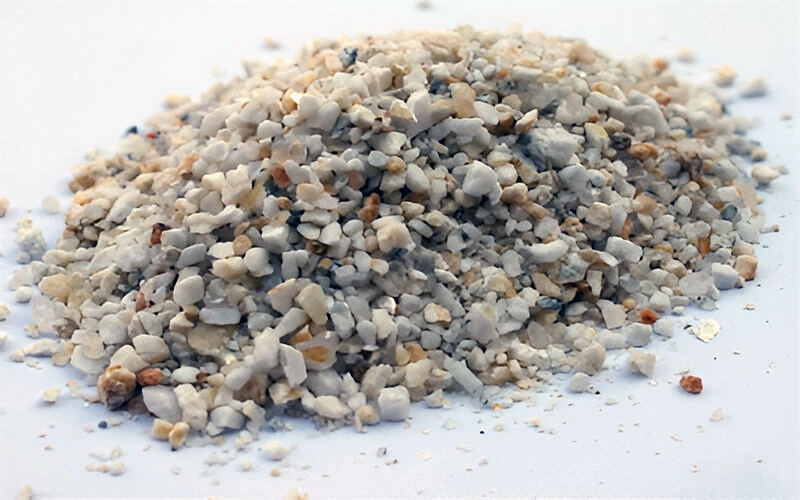Potassium feldspar, often abbreviated as K-feldspar, is a group of rock-forming minerals that contain potassium, aluminum, and silica (KAlSi₃O₈). It is one of the most abundant minerals in the Earth’s crust and is a key component of many igneous, metamorphic, and sedimentary rocks. Common varieties of potassium feldspar include orthoclase, microcline, and sanidine. These minerals are typically white, pink, or reddish in color and exhibit a vitreous luster with two distinct directions of cleavage.
K-feldspar is especially prominent in granite, syenite, and pegmatite rocks, where it often forms large, well-developed crystals. It also appears in metamorphic rocks such as gneiss and schist, and in some sedimentary rocks as detrital grains. Due to its durability, potassium feldspar can survive weathering processes and be transported into sedimentary environments.
One of the distinguishing features of potassium feldspar is its ability to form crystals with a monoclinic (orthoclase and sanidine) or triclinic (microcline) crystal system. Microcline is known for its characteristic grid-like twinning pattern visible under polarized light, which helps geologists identify it under the microscope.
Potassium feldspar has several important industrial uses. In the ceramics industry, it is a key raw material used in the manufacture of glass, porcelain, and ceramics. It acts as a flux, lowering the melting temperature of the mixture, which improves the strength and durability of the final product. It also contributes to the glossy finish on ceramic surfaces. In glassmaking, potassium feldspar adds alumina to the glass, enhancing its hardness and resistance to chemical corrosion.

In agriculture, ground potassium feldspar can be used as a source of potassium for plant fertilizers, although it is less commonly used than other potassium-rich minerals due to its relatively slow release of nutrients.
From a geological perspective, the presence and type of potassium feldspar in rocks can provide valuable information about the history and conditions of rock formation. For instance, sanidine is typically found in volcanic rocks and forms at high temperatures, whereas orthoclase and microcline form at lower temperatures and are more stable in intrusive rocks.
Overall, potassium feldspar is a vital mineral both in nature and industry. Its abundance, durability, and chemical composition make it significant in understanding Earth’s geology and in producing materials essential for everyday life.
Potassium feldspar with the other potassium feldspars orthoclase is a common raw material for the manufacture of some glasses, some ceramics, such as porcelain, and as a constituent of scouring powder.Some intergrowths of orthoclase and albite have an attractive pale luster and are called moonstone when used in jewellery. Most moonstones are translucent and white, although grey and peach-coloured varieties also occur.

| Element | SiO2 | AL2O3 | Fe2O3 | TiO2 | CaO | MgO | Na2O | K2O | S | LOI | MnO | P2O5 |
|---|---|---|---|---|---|---|---|---|---|---|---|---|
| Percent | 71.70 min | 15.31 | 0.01 | <0.01 | 0.09 | 0.01 | 1.84 | 10.52 | <0.01 | 0.33 | <0.01 | 0.16 |

© 2013 Vertix Co. All Rights Reserved. Leading Supplier Of Foundry & Metallurgical Materials